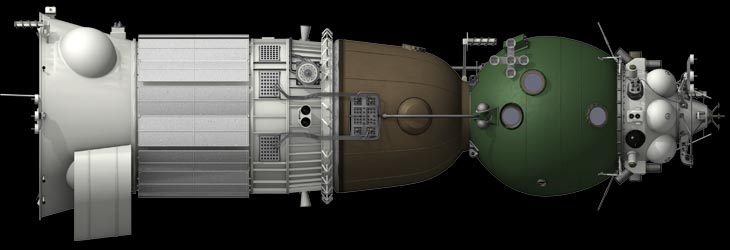
 Email Me
Articles
Tutorials
N-1 Rocket
Galleries
Home
Email Me
Articles
Tutorials
N-1 Rocket
Galleries
Home
Why did the Soviet Union lose the Moon race?
There is still much debate about why the Soviet Union – which was consistently way ahead in the early days of space exploration, failed to beat the USA to putting a man on the Moon. But while there is some disagreement over which factors were the most important, there is considerable consensus about which factors drove this.
They started later. The USA made putting a man on the Moon the key national objective, from before they had even put a man in orbit. Pretty much the entire space program focused on this objective. By the time this became a national objective in the Soviet Union, 2 years later, time was very tight to develop a powerful enough rocket, and get the required expertise in flight systems.
The N-
By the time they decided to try and beat the USA to the Moon, upgrading the N-
Conflicts between engineering bureaus. Unlike in the USA, the engineering bureaus were competing, not cooperating, with different chief designers pushing their own schemes.
The death of Korolev. It is hard to overemphasis the importance of Korolev to the Soviet space program. Apart from being an engineering genius, he was also adept at working within the Soviet system to get what he needed, and regarded by those who worked with him as a truly inspirational leader.
It was widely considered that any of Korolev’s deputies was good enough to head their own bureau, had they wished.
Mishin, who replaced him, was a brilliant engineer, but not nearly as good at getting people to work with him. Mishin himself said that he had no doubts; if Korolev had survived, the Soviet Union would have beaten Apollo 8 around the Moon at the very least.
Less funding. This drove another key factor – the lack of a test stand for the first stage. With such a complex first stage, testing was always going to be difficult. When the first stage could only be tested in an actual flight, it was clear that many test flights would be required. Korolev and others were well aware of this risk, and it was fiercely debated, but the cost and time required for a first stage test rig were unacceptable.
The engines. Much is made (justifiably) over the fierce arguments between Korolev and Glushko over engines, with Glushko (the best engine designer in the Soviet Union) demanding the use of advanced toxic propellants. Korolev considered these much too dangerous, and difficult to work with. After a blazing row in front of the politburo, Glushko point blank refused to work on the engines. Korolev went to Nikolai Kuznetsov, who had never designed an engine for use in a spacecraft before.
Kuznetsov’s results were eventually excellent – but there were major problems to
begin with. Large engines are MUCH harder to design than small ones, so Kuznetsov
went for small, efficient engines. This is why the N-
Amongst these problems were that the engines could only be used once – they could
not be test fired before going on the N-
Control systems. The Soviet Union was behind in the development of computer and control
systems – and the KORD system controlling the 30 engines in the first stage was critical
to a successful mission. Boris Chertok writes of how envious the Soviets were to
see the US mission control rooms, where every specialist had his own display showing
everything he needed to know, whereas their system consisted mainly of shouting down
telephones. However by the end of the N-
Despite all these factors, I prefer to think of the N-
It is also worth remembering that problems with the first few flights of a new rocket
were very common – even the Soyuz, starting life as the R-
But Glushko finally got control of the bureau, and set about removing any evidence
the N-

